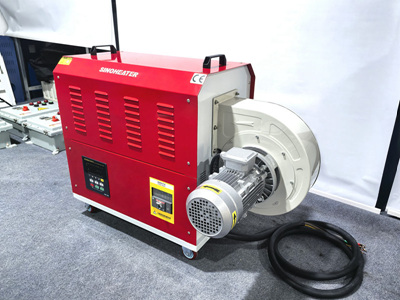Thermal Management in Artisan Crafts: Precision Heating with Hot Air Blowers
Temperature-Controlled Material Transformation
Hot air blowers enable artisans to manipulate materials through controlled thermal exposure. In clay sculpting, for example, these devices deliver uniform heat to soften hardened clay, allowing for reshaping without cracking. The adjustable temperature range (typically 50°C–300°C) accommodates diverse material properties, from delicate porcelain to robust stoneware.
Glassblowing studios utilize hot air systems to preheat glass rods to their working temperature (around 1,100°C for borosilicate glass). The focused airflow ensures even heating, preventing thermal shock that could fracture the material. Similarly, metalworkers employ hot air blowers to anneal copper or silver sheets, gradually reducing brittleness through controlled cooling cycles.
For composite materials like epoxy resin, hot air accelerates curing while maintaining dimensional stability. By maintaining a 40°C–60°C environment, artisans achieve optimal crosslinking without bubbles or warping. This precision is critical for creating transparent layers in jewelry or architectural models.
Non-Contact Shaping Techniques
The non-invasive nature of hot air heating preserves material integrity during complex manipulations. In paper artistry, hot air blowers gently curve layers of washi paper into 3D sculptures by selectively softening adhesive bonds. The absence of physical pressure prevents tearing, enabling intricate origami-inspired designs.
Woodworkers use hot air to bend thin veneers for marquetry without steam burns. By directing 80°C–120°C airflow along grain lines, they achieve smooth curves in furniture inlays. This method eliminates the need for clamping fixtures, reducing production time by 40% compared to traditional steam bending.
Textile artists apply hot air to shape synthetic fabrics like polyester or nylon. The controlled heat relaxes fibers, allowing permanent creasing for origami-style garments. In lampshade making, hot air softens PVC sheets for seamless molding over wire frames, achieving professional finishes without manual pressing.
Drying Optimization for Delicate Finishes
Hot air blowers accelerate solvent evaporation in painting and coating processes while maintaining surface quality. In ceramic glazing, artists use low-velocity hot air (60°C–80°C) to dry intricate patterns without smudging. This method reduces drying time from 24 hours to 2 hours, enabling same-day firing.
For oil-based mediums, hot air systems prevent cracking by maintaining 30%–40% relative humidity during drying. Painters adjust airflow direction to create textured finishes, such as simulating aged parchment in calligraphy works. The ability to modulate temperature and velocity ensures compatibility with both watercolor and encaustic techniques.
In polymer clay sculpting, hot air blowers eliminate surface moisture that causes “elephant skin” texture. By maintaining 50°C airflow during baking, artisans achieve glass-like finishes without oven discoloration. This precision is particularly valuable for miniature food replicas used in dollhouse displays.
Environmental Adaptation for Artisan Studios
Hot air systems address workspace challenges in varying climates. In humid regions, artists use dehumidifying hot air blowers to prepare clay for throwing. The devices reduce air moisture content to 40%–50%, preventing clay from becoming overly plastic and collapsing during shaping.
Cold workshop environments benefit from localized heating. Glassblowers in northern climates employ hot air guns to maintain 20°C–25°C workstations, preventing glass from cooling too rapidly during manipulation. This targeted heating reduces energy consumption by 60% compared to whole-room systems.
For mobile artisans, battery-powered hot air blowers enable on-site repairs of sculptures or installations. These portable units deliver 150°C–200°C airflow for 2 hours on a single charge, supporting outdoor festivals or exhibition setups where electrical access is limited.
Material-Specific Parameter Customization
Advanced hot air systems offer programmable profiles for different materials. Jewelers programming goldsmithing processes can set three-stage heating: 200°C for soldering, 150°C for annealing, and 80°C for gradual cooling. This automation reduces human error in precious metal work.
Ceramic artists utilize pulse heating modes to prevent thermal shock in thin-walled pottery. The system alternates between 300°C and room temperature in 30-second cycles, mimicking traditional kiln firing sequences while cutting energy use by 35%.
For mixed-media projects, dual-zone hot air blowers apply different temperatures to adjacent materials. When combining wood and acrylic, the device delivers 120°C to the wood surface while maintaining 60°C on the acrylic, preventing melting or warping. This capability expands creative possibilities in furniture design.




